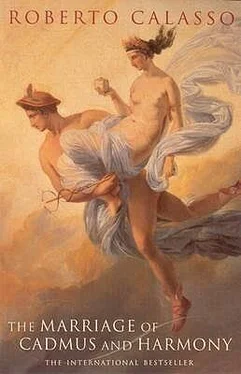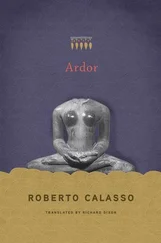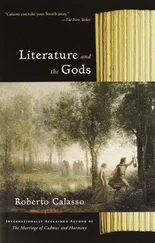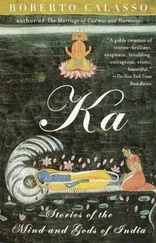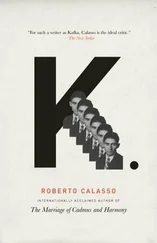The cosmos pulses back and forth between snake and bull. An enormously long time would pass before the snake, Time-Without-Age, was followed by the drumming of the bull, who was Zeus. Then a much shorter time before the bull Zeus coupled with Demeter to generate a woman in whom the nature of the snake pulsed once again, Persephone. And hardly any time at all, the time it takes for desire to flare, before Zeus, realizing that the baby Persephone had become a girl, transformed himself into a snake, coupled with his daughter, and generated Zagreus, the bull, the first Dionysus.
The story of the world was all contained in this becoming a bull, then a snake once again, to generate another bull. Told by Zeus, it was a story that began with a bull and ended with a bull. Told by Time-Without-Age, it was a story that began with a snake and waited to coil itself up in a snake once more. Time-Without-Age has been waiting ever since for:
… bull
father of snake and father of snake bull,
in the mountain the hidden one, oh herdsman, the goad.
Theós , the indeterminate divine, was an invasion, of body and mind. It was our becoming intimate with what is most alien. And nothing is more alien than the snake. A hand lifted the snake toward the neck. The hand slipped the snake under the tunic of the initiate. From the throat, down the cleavage between the breasts, if it was a girl, or across the taut chest, if it was a boy, the snake slithered into darkness, hidden beneath the cloth, toward the belly. Did it linger there? Did it wrap itself around the youth’s waist? It slid over the thighs and poked out down below, between the legs. “ Theòs dià kólpou ”: “god across the belly.”

The sea is the continuum, the perfection of the undifferentiated. Its emissary on earth is the snake. Where the snake is, there gushes water. Its eye is liquid. Beneath its coils flows the water of the underworld. Forever. Being sinuous, it has no need of joints. The same pattern covers its whole skin; its scales are uniform, its motion undulating and constantly self-renewing, like waves. The snake is to the bull as the sea to the land. The earth emerges from the sea, as the bull from the snake. To carry off Europa, the bull Zeus emerged from the sea and then plunged back into it again. Fending off the waves, Europa had one foot immersed in the sea, one hand gripping the animal’s back.
Where force reigns, the spirit is alien, detached from both earth and water. But Apollo and Athena were envious of force, that force which, by the time they were born, had already been pushed back to the ends of the earth. There, near the snaking coil of Oceanus, sleepless or lethargic creatures could still be found, lurking in caves or on mountains, creatures that still possessed an unextinguished force. Apollo and Athena knew they would have to flush out those creatures, kill them, and make that force their own.
Bearers of an opposite perfection, new and unimagined, Apollo and Athena were jealous of the perfection of the undifferentiated. But, in line with the division of the spoils between the sons of Kronos, they couldn’t intervene in the watery realm of Poseidon, nor in the subterranean kingdom of Hades. That left the earth as their playground. And meant they would have to play out their game with the snake. Athena killed Gorgon, who was crowned with snakes. Apollo killed Python, coiled around the spring of Castalia. Gorgon’s snakes stirred in the wind on Athena’s breast. They had become the fringe of the aegis. Python’s teeth and bones were kept in the bronze pot of the tripod, from which the Pythia chanted Apollo’s prophecies. Python’s scales were wrapped around the omphalós , the navel stone. The navel is the point, the only and indispensable point, where the perfect links up with the perfection of the undifferentiated. It is Europa’s foot dipped in the sea.
Two sovereign lines descend from Zeus: that of Dionysus and that of Apollo. Dionysus’s line is more obscure than Apollo’s; only rarely does it emerge from the shadow. Since he is both snake and bull, all history before Zeus is recalled in him and begins again with him. Apollo’s line is the more visible, yet even more secret than Dionysus’s when it comes to Apollo’s transgression against his father. Apollo is neither snake nor bull, but he who kills snake and bull, either loosing off the arrows himself, as with Python at Delphi, or sending his emissary, Theseus, to bury his sword in the Minotaur in Crete or capture the bull in Marathon.
Dionysus and Apollo: one is the weapon, the other uses the weapon. Ever since they appeared, Psyche has been running back and forth into the arms of first one, then the other.
When Hades asked to carry off Kore, Zeus sensed the time had come for a new ring to be added to the knot of the snakes. But this time it wasn’t up to him to act. He would be a consenting witness. The invisible would now reassert its rights over the body of the visible more strictly than before: their dealings with each other, long diluted and mingled together in life on earth, would find a new center of gravity.
Hades was claiming the supremacy of a world that was other : isolated, separate, and silent. But this other world culminated in the flower of the visible, and that flower was Persephone. With her, the secret of the snake, a secret passed on from snake to snake right up to snake Zeus, would now go over to the invisible world, and Zeus himself would have to surrender it if it was to go on functioning. Hades’ visit was prelude to a moment of enormous imbalance, both on Olympus and on earth.

It was a place where dogs would lose their quarry’s trail, so violent was the scent of the flowers. A stream cut deep through the grass of a meadow that rose at the edge to fall sheer in a rocky ravine into the very navel of Sicily. And here, near Henna. Kore was carried off. When the earth split open and Hades’ chariot appeared, drawn by four horses abreast, Kore was looking at a narcissus. She was looking at the act of looking. She was about to pick it. And, at that very moment, she was herself plucked away by the invisible toward the invisible. Kore doesn’t just mean “girl,” but “pupil” too. And the pupil, as Socrates says to Alcibiades, “is the finest part of the eye,” not just because it is “the part which sees” but because it is the place where another person looking will find “the image of himself looking.” And if, as Socrates claims, the Delphic maxim “Know thyself” can be understood only if translated as “Look at thyself,” then the pupil becomes the sole means of self-knowledge. Kore looked at the yellow “prodigy” of the narcissus. But what is it that makes this yellow flower, used at once for the garlands of Eros and of the dead, so marvelous? What sets it apart from the violets, the crocuses, and the hyacinths that made the meadow near Henna so colorful? Narcissus is also the name of a young man who lost himself looking at himself.
Kore, the pupil, was thus on a threshold. She was on the brink of meeting a gaze in which she would have seen herself. She was stretching out her hand to pluck that gaze. But Hades burst upon the scene. And Kore was plucked away by Hades. For a moment, Kore’s eye had to turn away from the narcissus and meet Hades’ eye. The pupil of the Pupil was met by another pupil, in which it saw itself. And that pupil belonged to the world of the invisible.
Somebody heard a cry. But what did that cry mean? Was it just the terror of a young girl being carried off by a stranger? Or was it the cry of an irreversible recognition? Some early poets suggest that Persephone felt a “fatal desire” to be carried off, that she formed a “love pact” with the king of the night, that she shamelessly and willingly exposed herself to the contagion of Hades. Kore saw herself in Hades’ pupil. She recognized, in the eye observing itself, the eye of an invisible other. She recognized that she belonged to that other. At that moment she crossed the threshold she had been about to cross while looking at the narcissus. It was the threshold of Eleusis.
Читать дальше
